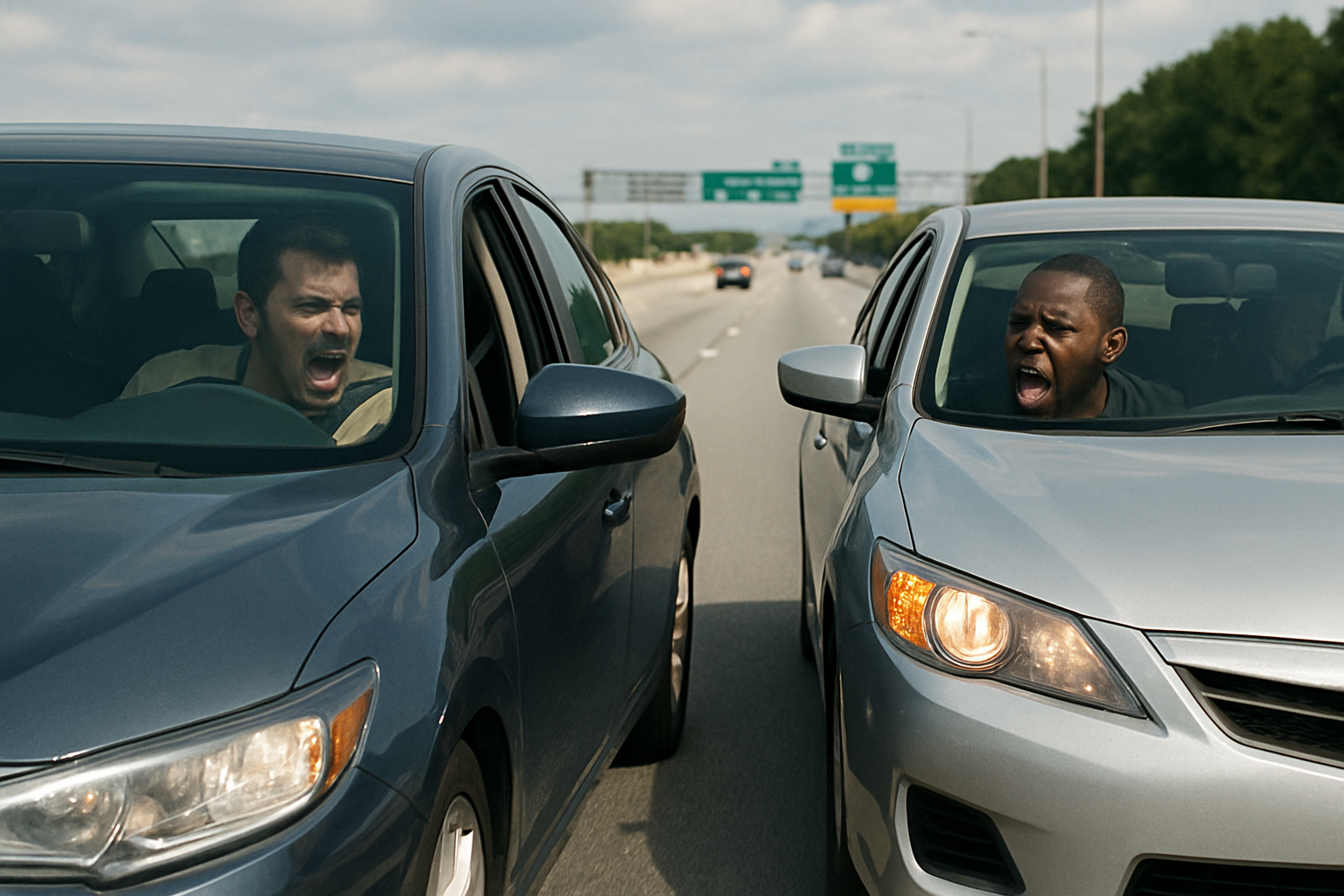Road rage encompasses much more than just what a dictionary can provide.
Road rage, also called
intermittent explosive disorder, is a term used to refer to violent incidents resulting from stress caused by
accidents or
incidents on roadways. It is often a natural extension of
aggressive driving.
Road rage frustration and aggression are not caused by traffic, no matter how heavy. Road rage is a learned cultural habit of retaliation when you feel like retaliating. It's a free choice we exercise. When we are frustrated in heavy traffic we have a choice of how we're going to respond.
Road rage in its simplest form occurs when a driver reacts angrily to other drivers, cutting them off, tailgating, gesturing or waving a fist. At its worst, the angry driver may become more aggressive and try to kill or injure another driver.
In all actuality, road rage
is an expression of an underlying problem with a driver. That driver is not able to remain in control of themselves and their emotions. It isn’t the automobile or the other driver that brings out the aggressive nature. It is inside the person who, regardless of the setting fails to control his or her temper and simply explodes.
Road rage
can happen to anybody at anytime
and can vary from an aggressive gesture or word to a full on physical attack, or in some cases, even murder.
Over the past few years, the so called
"road
rage" syndrome
has developed and we hear an increasing amount about it. However, road rage
is nothing new; it has been around us for many a year, probably since the beginning of road transport.
Everybody is capable of showing road rage, yes even YOU! That’s why it’s so important to learn defensive driving skills along with ways to manage any anger
that you might feel while operating a motor vehicle.
On the road, behaviors that can trigger incidents of road rage
are many and varied. Some people may just not like the way you look behind the wheel.
For additional information about road rage, please click on the links below:

